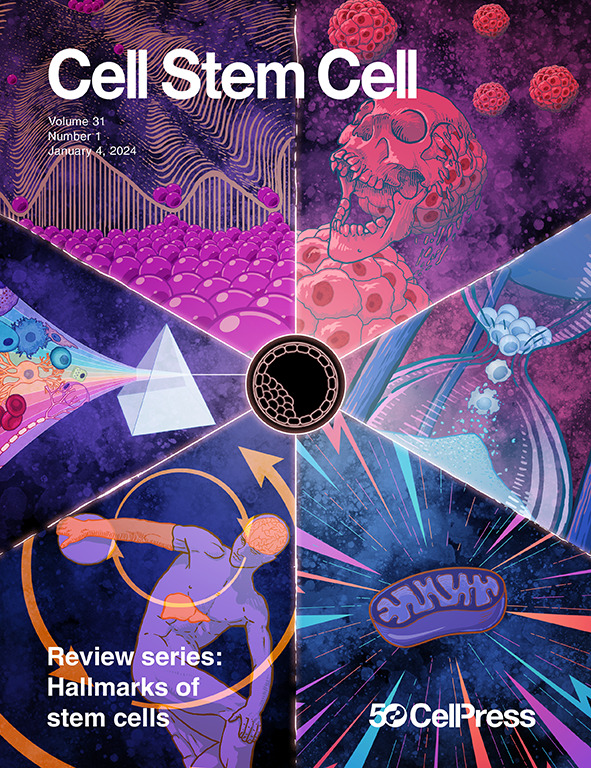用合成组织者建立人神经管类器官的背-腹模式
IF 20.4
1区 医学
Q1 CELL & TISSUE ENGINEERING
引用次数: 0
摘要
神经管(NT)的精确背腹(D-V)模式对中枢神经系统的发育和功能至关重要。然而,研究NT - D-V模式和相关人类疾病的现有模型仍然不足。在这里,我们介绍了来自多能干细胞聚集体融合(“ORDER”)的组织者,这是一种在神经外胚层细胞聚集体中建立相反的BMP和SHH梯度的方法。利用这种方法,我们从斑马鱼和人类多能干细胞(hPSCs)中生成了具有有序D-V模式的NT类器官。单细胞转录组学分析显示,合成的人类NT类器官(hNTOs)与卡内基12期(CS12)的人类胚胎脊髓非常相似,与人类NT的相似性高于小鼠模型。此外,利用hNTO模型,我们证明了WNT信号在调节中间祖细胞中的关键作用,模拟了tctn2相关的D-V模式缺陷,并确定了一种拯救策略。本文章由计算机程序翻译,如有差异,请以英文原文为准。

Establishing dorsal-ventral patterning in human neural tube organoids with synthetic organizers
Precise dorsal-ventral (D-V) patterning of the neural tube (NT) is essential for the development and function of the central nervous system. However, existing models for studying NT D-V patterning and related human diseases remain inadequate. Here, we present organizers derived from pluripotent stem cell aggregate fusion (“ORDER”), a method that establishes opposing BMP and SHH gradients within neural ectodermal cell aggregates. Using this approach, we generated NT organoids with ordered D-V patterning from both zebrafish and human pluripotent stem cells (hPSCs). Single-cell transcriptomic analysis revealed that the synthetic human NT organoids (hNTOs) closely resemble the human embryonic spinal cord at Carnegie stage 12 (CS12) and exhibit greater similarity to human NT than to mouse models. Furthermore, using the hNTO model, we demonstrated the critical role of WNT signaling in regulating intermediate progenitors, modeled TCTN2-related D-V patterning defects, and identified a rescue strategy.
求助全文
通过发布文献求助,成功后即可免费获取论文全文。
去求助
来源期刊

Cell stem cell
生物-细胞生物学
CiteScore
37.10
自引率
2.50%
发文量
151
审稿时长
42 days
期刊介绍:
Cell Stem Cell is a comprehensive journal covering the entire spectrum of stem cell biology. It encompasses various topics, including embryonic stem cells, pluripotency, germline stem cells, tissue-specific stem cells, differentiation, epigenetics, genomics, cancer stem cells, stem cell niches, disease models, nuclear transfer technology, bioengineering, drug discovery, in vivo imaging, therapeutic applications, regenerative medicine, clinical insights, research policies, ethical considerations, and technical innovations. The journal welcomes studies from any model system providing insights into stem cell biology, with a focus on human stem cells. It publishes research reports of significant importance, along with review and analysis articles covering diverse aspects of stem cell research.
 求助内容:
求助内容: 应助结果提醒方式:
应助结果提醒方式:


